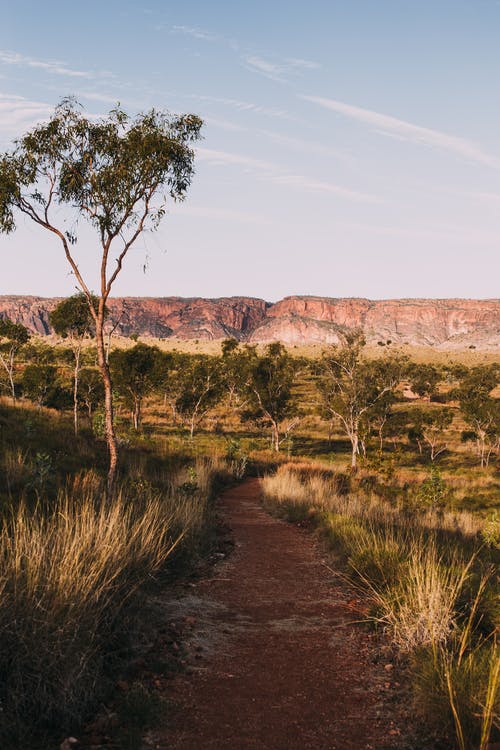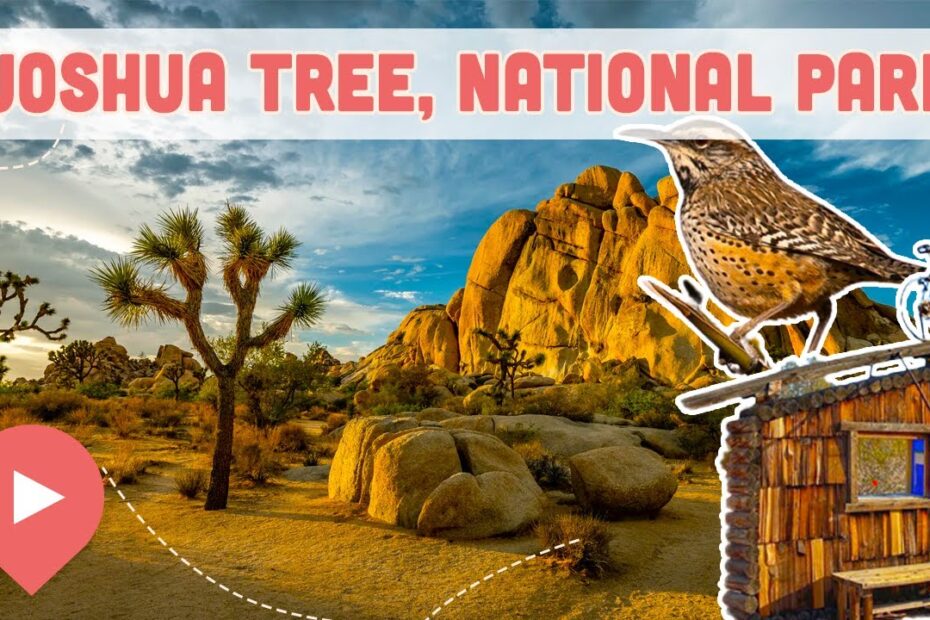Joshua Tree National Park is not like other national parks. This protected area of desert in California doesn’t boast the expansive forests or the crowd-pleasing wildlife of Yellowstone or Smokey Mountains. Instead, Joshua Tree National Park offers a completely different experience for a different kind of traveller. If you’re looking to brave the desert and soak up the weird and wonderful, keep watching. Here are the best things to do in Joshua Tree National Park.
Climbing, Bouldering, and Slacklining
Not so long ago, Joshua Tree National Park was regarded as a winter training destination only. Climbers waiting for the snow to melt in other parks would come to Joshua Tree to practise in the warmth. That’s changed, however, and the park is now a global destination for climbing and bouldering enthusiasts.
The Park offers over 8,000 climbing routes, thousands of bouldering problems, and so much more. The unique structure of the rocks that fill the park mean that nearly any rock can become a problem to scramble up and overcome. In fact, casual hikers are encouraged to boulder when they see a fun climb, that’s how suitable the park is to this sport. For first time climbers, there are plenty of guided tours and excursion groups, and specialized gear can be rented.
Furthermore, the booming sport of slackling and highlining is supported here too, and several areas offer a thrilling rope-walk over a gap. Just bear in mind that whether it’s climbing or slacklining, special permission is required to sink bolts into a rock. But as long as you remember to “leave no trace”, Joshua Tree National Park will be a climbing paradise.
Hidden Valley Nature Trail

If you only have a day in Joshua Tree National Park, then this accessible and beginner-friendly trail is the best thing to do. Think of it as a “best of” for the Park. This one mile trail takes hikers on a scenic loop around the titular hidden valley, and gives you a great chance to experience the scenery, trees, and wildlife of the park in a short time.
The trail begins with a short scramble over boulders, and then it’s an easy walk over hard sand. While this trail isn’t known for an abundance of Joshua Trees, the ancient and alien looking plants that give the park its name, you’ll still see plenty of the unique flora of this place. If the walk is becoming too tame, there are plenty of accessible rocks to climb, and this trail is popular with bouldering enthusiasts. While short, the Hidden Valley Nature Trail is the best way to experience the unique rock formations and dramatic skylines of Joshua Tree National Park in a day.
Twentynine Palms
Spending time in a city might not be what most people think of for a desert trip, but the eclectic Twentynine Palms is worth checking out. This is the largest city in the vicinity of Joshua Tree National Park, and the city acts as one of the gateways to the park. What it lacks in nightlife and refinement, it makes up for in charm and an artistic spirit.
The first thing to do in Twentynine Palms is visit the Oasis Visitor Center to learn more about the Park. Grab a map and some local advice before venturing in, you won’t be sorry. The city is worth exploring to see its unique murals, and to visit the quant shops and art galleries. Yearly events are also held, including motorcycle rallies, live music concerts, and more.
If you’re enjoying the video, we’d appreciate it if you took a moment to like it. And don’t go anywhere, Joshua Tree National Park still has a lot on offer.
Birding
Joshua Tree National Park is an ecologically diverse environment. The Park is essentially the meeting point of two deserts, the higher and cooler Mojave, and the lower and warmer Colorado. So despite its barren appearance, the Park has a variety of wildlife. Naturally, there are plenty of species of birds, and birding in Joshua Tree National Park is a unique experience.
The Park is home to over 250 species of birds, many of them stopping in the Park to rest while migrating. Avid birders can expect to see Turkey Vultures, owls, eagles, sparrows, hummingbirds, and roadrunners, among many others. Birding tours to common sighting areas are available, and it’s always easy to meet up with local enthusiasts for a more casual experience. If you can choose when to go, winter is best. Not only is the heat friendlier for humans, it’s also when many of the birds are migrating and stopping in the park.
Hike to the mines and mills
Before Joshua Tree National Park was protected, prospectors and wealth-seekers came to the area to look for gold. When the veins dried up, they packed up. But a lot of their legacy is left behind, ready to be explored.
The Desert Queen Mine Trail is a short and easy loop that comes in at 1.6 miles. This mine was in use for over 60 years, and is now a registered Historic Place. This trail takes you down into a small canyon, and past numerous pieces of long-abandoned mining equipment.
Wall Street Mill is an easy trail of 2.15 miles over flat terrain, with a truly unique sight at the end. The Mill was the next destination for gold ore. Once mined, it was processed and crushed at mills like these. Now, Wall Street Mill is a ruin, but it’s a ruin that’s fascinating to explore and will make for some stunning photographs with the harsh desert backdrop. While there are several other mines to explore, these two can easily be seen in a single outing.
Check out the alien vegetation
Life out in the desert is hard, and the flora that call these environments home have had to adapt in some strange ways. Joshua Tree National Park gets its name from, what else, the unique Joshua trees that dot its landscape. Known as the yucca brevifolia, these trees have a limited range across the Southwest, and its easy to get close to them here. Their dagger shaped leaves, and haphazard branches cast silhouettes that make for spectacular photos, and nature lovers will be fascinated at the adaptations made to survive here.
For another special type of plant, take a walk on the Cholla Cactus Garden Trail. This tiny hike is less than a half mile and completely flat, and lets you see the cholla cacti up close. These cacti are also known by a much cuter name: Teddybear cholla, although you definitely don’t want to hug them. The trail takes you over boardwalks and past 16 information sites. Be sure to visit during the spring to see the cacti erupt in a riot of colorful flowers. And while you’re in the park, be sure to take your time to examine all the weird and wonderful plant life that lives here.
Rocks, so many Rocks
We’ve mentioned bouldering already, but this is a different way to appreciate the dramatic landscape of Joshua Tree National Park. Rocks and boulders are an intrinsic part of the Park experience, and towering granite formations are all over. Some of these have been shaped by thousands of years of wind, sand, and water to create unique geological sights.
Skull Rock is one of the more famous of these. Located right next to a road, Skull Rock can be visited by just stepping out of your car, but it’s also part of some spectacular hikes. Be sure to come at dawn to beat the crowds, as this craggy cranium attracts a crowd and makes for great photos.
There are plenty of other unique rocks worth visiting, but there are too many to mention. Some other standouts are Arch Rock, with a 30 foot natural arch carved out of the stone, and the popular Hall of Horrors, a narrow slot in the rock that is popular with climbers. In general, the stones of Joshua Tree National Park tell a unique story, and are worth studying no matter where you go.
Take in some amazing views
Joshua Tree National Park has plenty of mountains, vistas, and stunning scenery. It’s well worth it to plan a hike not just in a loop, but to the top of a mountain. Key’s View offers spectacular scenery from an altitude of more than 5,000 feet. This lookout is accessible by car, and can be extended by hiking to Inspiration Peak for even more breathtaking scenery.
But if you want a trail that will test you, and you’re not daunted by steep elevation in full sun, Ryan Mountain awaits. Standing at an altitude of 5,465 feet, this popular hike rewards those who conquer it with amazing views for miles and miles in every direction. If you’ve spent time in the Park, then viewing it from above will give you an all-new sense of appreciation for it.
Jumbo Rocks Campground
One of the best things to do in Joshua Tree National Park is stay the night. Or ideally, several nights. While there are plenty of options across the nine total sites, Jumbo Rocks Campgrounds is the biggest, and most spectacular.
Living up to its name, Jumbo Rocks Campground is surrounded by towering monoliths. Like the rest of the park, the rocks are just begging to be climbed. The Campground requires booking from September to May, and has 124 sites available. RVs and towed vehicles can be accommodated too. The Campground serves as a good hub for other explorations, and plenty of hikes and sights can be reached from here.
Jumbo Rocks Campground doesn’t offer potable water, but there are firepits, an amphitheater, spectacular sunsets, and a night sky that stretches for miles. Pitch a tent, stay up late, and enjoy the desert in a unique way.
If you’re planning an adventure into Joshua Tree National Park, where would you go? Which weird, wonderful, and spectacular sight are you excited to see? And if you’ve been, then what do you recommend? Leave a comment below and tell us, and don’t forget to like the video. If you want more travel insights, be sure to subscribe to ViewCation and click the bell icon to stay updated on all our latest content.
